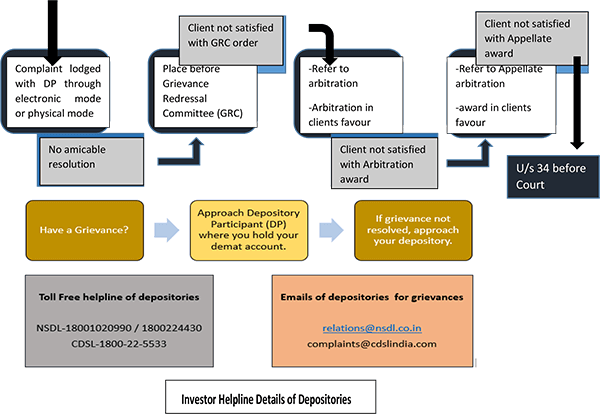Some people begin investing early in life, which is helpful. Putting your money to work is a good decision. It appears to be difficult and risky to pursue in the beginning but in the long term, it’s beneficial and worth it. Investments only provide high returns when wise choices are made.
There are several investing choices available today, some of which are secure and will gradually increase your money for you, whereas some are quite risky. But if you are new in the field of investing then beginning with SIP would be the right option for you. In this blog will see the top 7 mutual funds for SIP to invest in 2023.
What is SIP?
SIP stands for Systematic Investment plan. SIPs have evolved as a popular and systematic strategy for wealth generation in the volatile world of financial markets, where money keeps going up – and down.
A systematic Investment Plan (SIP) provides a systematic method of investing in mutual funds in a s disciplined and methodical manner. It helps investors to contribute a set amount of money from their bank at regular intervals to a mutual fund scheme of their choice. SIPs are intended to assist investors in building wealth over time by using the power of compounding, which not many people understand or use.
SIPs involve making investments in mutual funds on a regular and continuous basis regardless of market conditions.
It is solely the investors’ decision on how much money they are ready to put into SIP. Because of this, all kinds of investors from low-income to high-net-worth can benefit from it.
SIP simply makes it simpler for beginner investors to enter the market with the freedom and security to begin investing with a relatively small investment and expand it gradually as their financial capacity increases with time.
SIP is intended to help people create wealth over the long run. It is one of the easiest ways to invest today in the market and many Investors take advantage of the compounding effect and build up a big capital for their financial objectives, such as retirement, education, or property ownership, by making regular investments over a long period.
What are Mutual Funds?
Mutual funds, known as investment vehicles, combine the capital of several participants to buy a variety of investments such as bonds, money markets, stocks, and other assets. Professional fund managers or companies that manage funds manage them; their main duty is to make decisions about investments that align with the fund’s declared investment goals.
Diversification is one of mutual funds’ main benefits. Mutual funds can invest in a wide variety of assets by combining the capital of several participants. This diversification automatically lessens the impact of a single investment’s bad performance and helps disperse risk.
Types of Mutual Funds
Equity funds:
Equity funds invest largely in equities with the goal of capital growth.
Risk: Considerably high due to the volatility of stock values.
Investor profile: Those with a lengthy investing horizon and a greater risk tolerance.
Debt Funds:
Goal: Generating income by investments in fixed-income instruments, such as bonds and debentures.
Risk: Generally lower than that of equity funds, although credit and interest rate risks are still there.
Investor Profile: Those looking for a reliable source of income at a lower risk than stocks.
Tax Saving Funds:
Goal: Long-term capital growth that qualifies for Section 80C of the Income Tax Act tax incentives.
Because ELSS funds generally invest in stocks, the risk is moderate to high.
Investor Profile: Those seeking alternatives with a longer lock-in period that save money on taxes.
Large-cap, Mid-cap, and small-cap funds:
Investing in businesses with varying market capitalizations (small, mid, or large) is the goal.
Risk: Large-cap funds are often less volatile than small-cap funds, which carry a higher risk but also have the potential for bigger gains.
Investor Types: Mid-cap for a balanced strategy, large-cap for a lesser risk tolerance, and small-cap for a higher risk tolerance.
Worldwide or Foreign Funds:
The goal of investing in bonds or stocks of foreign corporations is to diversify portfolio holdings.
Risk: Varies according to the economic and geopolitical circumstances of the participating nations.
Investor Profile: Diversified and internationally oriented investors seeking exposure.
Factors to Consider Before Investing in Mutual Funds
Tolerance for Risk:
Everyone’s risk tolerance is different based on their financial situation, so it is advisable to consider your risk capacity before investing in mutual funds. This might help you understand what type of market returns you may expect.
Your Financial Objectives:
It is important to first figure out your financial goals before starting your investing journey. This will help you in deciding whether you need debt or equity-oriented money to fulfil your objectives.
Experience of Fund Manager:
The more the experience the better the management. The longer a fund manager has been effectively managing funds, the better. This will offer them greater experience dealing with market downturns.
Top 7 mutual funds for SIP investments in 2023
1) Axis Bluechip Fund
The Axis Bluechip Fund is a diversified equity mutual fund that invests in firms from a variety of industries.
The fund has been managed by the Axis Mutual Fund since its launch in 2010.
The track record of this fund is long in providing returns to investors and is one of India’s most popular funds.
2) Axis Midcap Fund
The S&P BSE 150 MidCap Total Return Index serves as the benchmark for the Axis Midcap Fund, an open-ended mid-cap equity plan.
Since its launch in 2011, the fund has been managed by the Axis Mutual Fund.
3) Axis Small Cap Fund
Axis Small Cap Fund Direct-Growth is an Axis Mutual Fund Equity Mutual Fund Scheme.
The programme seeks to achieve long-term capital appreciation through a diversified portfolio of mostly small-cap stock and equity-related products.
4) Small Cap Fund of SBI
SBI Small Cap Fund Direct-Growth is an SBI Mutual Fund Equity Mutual Fund Scheme.
The plan attempts to provide participants with the potential for long-term capital gain as well as the liquidity of an open-ended scheme by investing primarily in a well-diversified basket of equity equities.
5) Long-Term Equity Fund of Parag Parikh
The Parag Parikh Long Term Equity Fund is a Flexi Cap Equity fund that invests in equities and equity-related assets. The fund makes long-term investments in enterprises.
6) Large Cap Nippon India Fund
The fund has an AUM of 15855.03 crores and a CAGR of 15.90 per cent over the previous five years.
7) SBI Equity Hybrid Fund
SBI Equity Hybrid Fund Direct Plan-Growth is an SBI Mutual Fund Hybrid Mutual Fund Scheme.
The scheme aims to provide participants with long-term capital appreciation as well as the liquidity of an open-ended scheme.
Conclusion
SIPs give a systematic method to building up wealth, notably through mutual funds, making investing accessible to people of all income levels.
As we approach 2023, the top seven mutual funds for SIPs showcase appealing options, each carefully selected for its historical performance and fit with investor interests.




